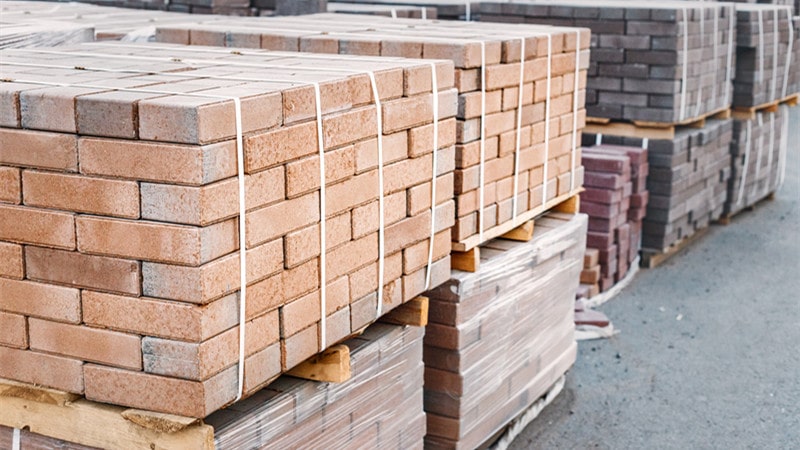In 2024, we will witness an increase in efforts to decarbonise sectors of the UK economy. This is evidenced by the UK government commitment to achieve net zero emissions in 2050.
Because of this, it is important for stakeholders in the construction industry to accelerate their adoption of energy efficiency approaches through the use of environmentally-friendly design and building materials. The overall goal of these targets is altruistic and even moral — to sustain and preserve our planet.
The use of eco-friendly building materials is not new. For instance, natural stone, mud and bamboo have been utilised by man for centuries as raw materials for housing construction. As our industry continues to evolve and become more competitive, there is a blatant disregard of sustainable practices while sourcing for raw materials leading to loss of finite forest resources, disappearance of natural biodiversity and even climate crisis.
The good news is that a lot of construction companies, particularly in the UK, are making all possible efforts to ensure that their activities are environmentally responsible and energy efficient.
We are currently seeing a surge in the popularity of eco-friendly building materials and, in this article, we will be exploring the ones you should consider for your construction projects in 2024.
What are eco-friendly building materials?
Eco-friendly building materials are manufactured with renewable resources. They also have minimal environmental impact. During their production process and even throughout their life cycle, they do not pose danger to the environment.
Some advantages of utilizing eco-friendly materials include energy efficiency, cut cost on utility bills, lower carbon emissions, healthier living and low maintenance.
The Elements of eco-friendly building
In order to ensure your home has a very minimal environmental impact, you have to consider the elements of eco-friendly building. For instance, the elements encompasses different aspects like:
• Eco-design
• Reduction of waste
• Indoor air quality
• The use of eco-friendly construction material
• Durability
When combined, these elements will result in a more sustainable construction environment and assist in lowering your carbon footprint. Always remember to prioritise these elements in your build stage through the use of sustainable materials.
Eco-friendly Fencing
The fence plays a very important role in ensuring that your home environment remains safe and secured. It functions include:
• Discourage intruders and trespassers and create a secured environment for your kids, pets and household.
• Helpful in defining your property boundary.
• Adds to the aesthetic value of your home.
• Improves the privacy of your structure.
Wood is the most popular material for fencing. A lot of homeowners still rely on wood fences for their security. However, the negative impact of wood fences on the environment has been widely studied.
Apart from the fact that wood building products are largely responsible for deforestation and forest degradation, many of the preservatives and chemicals used to enhance the longevity of wood fence posts are harmful to humans and the environment. An eco-friendly alternative to wood fencing is composite fencing.
Manufactured from a combination of reclaimed wood fibre/ particles and recycled plastics, composite fencing (also called wood plastic fencing) offers homeowners the rustic beauty of wood without the hassle of routine maintenance. This is perfect for eco-conscious people who wouldn’t want to invest time and resources over the lifetime of wood fencing.
Other eco-friendly fencing options are:
Bamboo fences
If you seek the appearance and texture of timber, bamboo fences are another great option. Most people erroneously think bamboo is a fence but that is false. Bamboo is a fast growing, easy to plant flowering plant. It is also an eco-friendly material.
Living fences
Planting living fences is an important way to ensure sustainability and add value to the environment. It is composed of greenery like hedges, shrubs, trees and flowering bushes. It is a smart option if you want to keep your property looking natural.
However, they may require some level of upkeep and if not properly maintained, living fences may have an unattractive and unkempt appearance.
Metal fences
Although this may vary based on the type of metal used, some metal fences are environmentally responsible.
A good example is aluminum and steel fences which are manufactured with recyclable materials. It also has a manufacturing process that has a minimal environmental impact.
Eco-Friendly cladding
The principle of exterior cladding is not new and many homes in the UK now have their walls cladded. However, eco-friendly replacement cladding is now increasingly being used since it has enormous environmental and cost benefits!
If you are seeking a sustainable option for cladding your home, there are numerous materials to select from. You don’t have to worry about your budget or home aesthetics, there’s definitely something that will cater to your unique needs.
They include:
Aluminum cladding
Known for their durability and lightweight, aluminum cladding can protect your building structure from the effect of weathering and other external elements. It is low-maintenance and effective in reducing the energy consumption of your building.
Aluminum is also a recyclable material, known for its thermal performance.
Composite
Composite cladding is fast becoming a favourite of homeowners in the UK. It is manufactured from wood waste and recycled plastics, making it a very sustainable option. It is also moisture resistant, sturdy and highly durable.
Vinyl
Known for its long-lasting features, vinyl cladding is highly resilient. It can retain its beautiful look for years, even after exposure to various weather elements. It emits lower greenhouse gasses and is fully recyclable.




